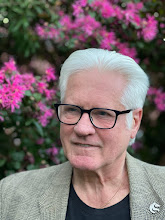Every field of learning or practice relies to an extent on specialised terminology to describe what is theorised and/or the techniques that need to be practised. Professionals in the fields of prose fiction and cinema certainly use specialised terms to communicate with each other, and critics adopt much of this terminology as well as adding some of their own. There's nothing wrong with that, and critics are entitled to write on the assumption that some of this terminology is transparent to their readers. Obviously, however, it makes a difference whether I am writing a movie review in a newspaper (aimed at a popular audience, albeit one with an interest in seeing movies) or whether I'm writing for a peer reviewed journal, where much more can be assumed about my readers' theoretical knowledge and terminological sophistication.
Accordingly, I'm not totally opposed to the use of jargon by literary and cultural critics. Things only go wrong when, for whatever reasons, the use of jargon moves beyond whatever is needed for concise, accurate expression and starts to take on the appearance of writing to impress others, rather than writing to communicate. As it happens, we have inherited much language from over the centuries that is still useful - words and expressions such as "plot", "character", "theme", "narrative suspense", "climax", and so on, and in many cases this kind of language is perfectly adequate for what needs to be said. We also have more sophisticated terminology, such as "narrative viewpoint", with ideas such as "first-person narrator" and "omniscient third-person narration" - this terminology has to be consciously learned (in my experience, it is not necessarily transparent to first-year Arts students), but it is still relatively straightforward. By contrast, a great deal of other language depends on the acceptance of speculative and contestable (not to mention dubious) theories of culture and language, and it is often used more to signal the critic's wider theoretical commitments than to be helpful to readers who don't necessarily share them. Hold that thought for a moment.
Some of the aliens discussed by Gomel could almost be considered supervillains, though I admit to being a bit Procrustean in squeezing this post into my Sunday supervillainy series. (Oh well, sue me!)
A good example of such alien supervillainy is the shapeshifting creature depicted in John W. Campbell's "Who Goes There?", and in the movies based directly on it. In Campbell's original novella, he makes some key choices as to how he will convey the alienness of the alien while protecting the suspense of the narrative. Readers familiar with Campbell's work will appreciate Gomel's point that he was a versatile writer who knew exactly what he was doing in making choices of technique. Against that background, and in a discussion of the superhuman imitative powers of the alien species portrayed by Campbell, Gomel has this to say:
[I]t is also acted out on the level of the novella's narration. "Who Goes There?" has a third-person extradiegetic and omniscient narrator and is marked by a total lack of focalization. The characters' actions are described, and some information on the setting is given. But there is no access whatsoever to any of the characters' interiority. Whether man or monster, we know only what each of them does, not what he feels or thinks.This sounds right, though I need to go back and re-read "Who Goes There?" to make sure.
Note that Gomel uses some unusual terms (unusual, that is, in everyday English), such as "extradiegetic" (outside the fictional reality constructed by the story), "focalization", and "interiority". By this stage of her book, the terms should be fairly clear even to people who are not otherwise familiar with them, but it is more important that she uses them lightly - they appear in sentences that are otherwise perfectly comprehensible, and they do allow her to communicate accurately and concisely to other people who spend much of their time thinking about fictional narratives.
Also, she is making a point that is actually useful to people wanting to understand more about how professional writers make choices of technique and achieve their effects. I am unhappy with much of the literary and cultural criticism that I read because it is not useful in that sense (and does not appear to proceed from that kind of understanding of art and literature, but rather from some sort of political or quasi-political, theory, combined with an urge to judge art according to how it serves or fails to serve the critic's politics).
I like Gomel's book - at least so far - because it does what I also aim at. It produces synthesis and understanding when discussing cultural products, and in doing so it draws on intimate familiarity with, and reasonably robust theoretical understandings of, the relevant traditions. There is very little sense here of attempting to stand in judgment of art primarily from the perspective of certain current political imperatives. I don't expect critics to throw away their practical and theoretical political commitments entirely, but I do hope to read their work for greater understanding of how art and literature actually work: in particular, how they achieve their effects. This requires a different kind of knowledge and understanding. Whether or not I succeed in particular cases, this is what I aspire to in my own discussions of art and literature.

No comments:
Post a Comment